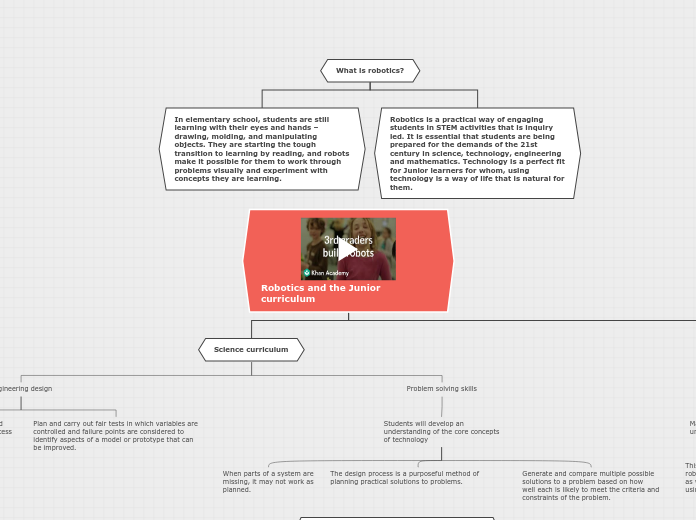Robotics and the Junior curriculum
Science curriculum
Engineering design
Define a simple design problem reflecting a need
or a want that includes specified criteria for success and constraints on materials, time, or cost.
Plan and carry out fair tests in which variables are
controlled and failure points are considered to
identify aspects of a model or prototype that can
be improved.
Problem solving skills
Students will develop an
understanding of the core concepts
of technology
When parts of a system are
missing, it may not work as
planned.
The design process is a purposeful method of planning practical solutions to problems.
Generate and compare multiple possible
solutions to a problem based on how
well each is likely to meet the criteria and
constraints of the problem.
Math curriculum
Useful link to measurement and data
Mathmetics strand: Geometric measurement:
understand concepts of angle and measure angles.
This can be incorporated into the curriculum using robotics by designing a robot incorporating angles, as well as coding a pathway or pattern for a robot using the measurement of angles.
